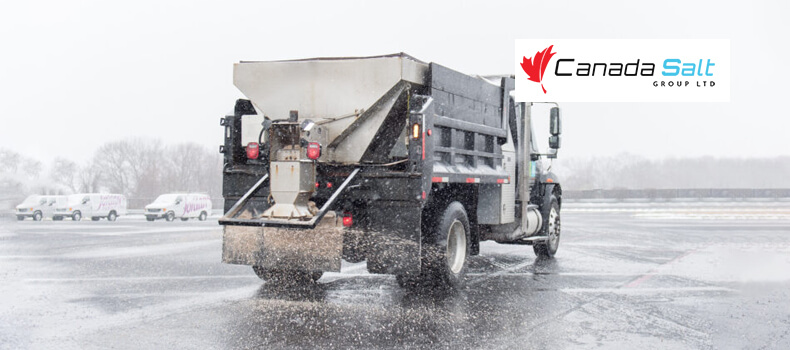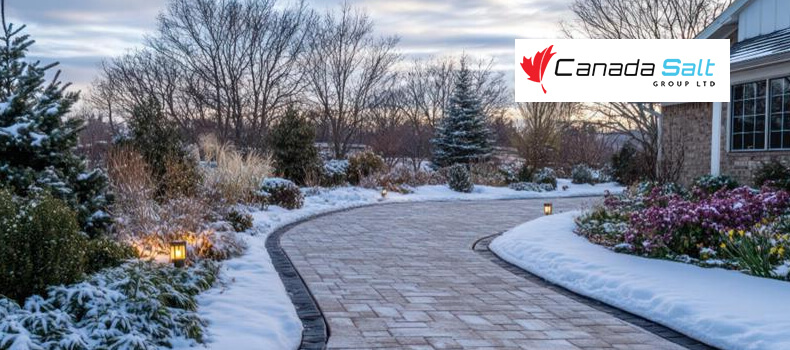How Often to Salt Parking Lots?
The most common issue we all encounter during winter is the over-application of salt. This topic has gained more focus over the past few years. While extensive research has been conducted on the proper use of salt on roads, parking lots present different challenges, including traffic, a combination of pedestrians and vehicles, and a variety of surfaces such as walkways, driveways, parking stalls, and more. Even stores need clear parking lots in front of them so that they can stay open. We assume that applying more salt is effective. But, rather than oversalting, efficient salting plays a key role. In this article, we will explore the topic “How often to salt parking lots.” Let’s get started!
Why is Salt Application Necessary?
The salt used for ice management during winter is sodium chloride. When spread on surfaces, it decreases the freezing point of water and melts the snow. However, for salt to work effectively, you need to ensure it is applied at the proper time.
Timing is the most important aspect for effective snow and ice management. Prior application of salt ensures that your property is easy and safe to access during the winter months. Salting also improves traction and reduces the chances of falls, slips, and accidents in the parking lot. As a business owner, you must maintain a safe environment to avoid legal liabilities. It’s better to reduce liability whenever required. If you want to be ready before the snowstorm arrives, use brine so that snow removal will be easy.
Factors That Determine How Often to Salt Parking Lots
Several factors should be considered when determining the frequency of salting. They are:
Weather Conditions
Applying salt according to the severity of the weather is crucial. Apply a thin layer of salt before the storm to prevent snow or ice from adhering to the surface, making plowing the lot easier. If the snowfall doesn’t stop for several hours, another layer of salt is required to maintain traction and keep your parking lot safe. After the storm, once the plowing is complete, it’s best to apply salt as a final application to clear any remaining snow patches, making the surface clear for both vehicles and pedestrians.
Temperature
You can use traditional rock salt when the temperature is between 15°F and 32°F. If the temperature is below, then the rock salt loses its effectiveness. Then you need to opt for treated salt or blended salts to work in lower temperatures.
Traffic Volume
If the parking lot experiences high foot traffic and increased vehicle movement, you need frequent salting. The movement of vehicles and people will cause the salt to wear faster.
Time of Day
You have to keep the parking lot clear and ice-free for your visitors during peak business hours. Once the store is closed, you can pretreat the surface; an overnight application is also sufficient. Pretreating helps to remove the snow easily the next day.
Recommended Salting Schedule
Below, we have provided a simple guide to help you keep your property safe during the winter months.
- Light Snow: If the snow is less than 1 inch, spread a thin layer of salt before and after the snowstorm
- Moderate Snow: If the snow thickness is 1-3 inches, preapplication is important. If required, you need to apply during the snow and after snow removal. Additionally, you need to apply to ensure a clear parking lot without any ice patches.
- Heavy Snow: If the snow thickness exceeds 3 inches, multiple applications are required before, during, and after the storm.
- Freezing Rain or Icy Conditions: Spread salt before precipitation starts to prevent ice formation. If another layer forms on the ice, apply the salt again to maintain safe and slip-free conditions.
Best Practices for Parking Lot Salt Application
Timing is Critical
As mentioned above, timing is the most crucial aspect to follow in ice or snow management. Applying salt before the snowfall or after precipitation starts is a preventive measure. Through this practice, the salt creates a brine layer that prevents ice or snow from sticking to the surface. Additionally, post-storm application helps to melt the existing ice or snow.
Proper Spread Rate
It’s essential to use the correct quantity of salt based on the severity of the climate. Most of us assume that spreading more salt is effective, but it’s wasteful and harmful to the environment. Knowing the right amount of salt on a parking lot can give you effective results.
Maintenance and Storage
Proper storage of salt and snow removal equipment is crucial for ensuring safety and maintaining its longevity. Store the salt in a dry, covered area to prevent clumping and maintain its freshness. Additionally, if you have equipment like a salt spreader, you need to clean and maintain it after every use to ensure even salt distribution. Also, check and inspect the spreaders regularly to avoid the equipment from using too much salt during salt spreading.
Environmental Impact
There are many concerns associated with parking lot salting. The salt will wash off with the movement of vehicles and foot traffic, seeping into nearby water sources and affecting the ecosystem. It also corrodes the nearby metal and concrete structures. So, use salt wisely by incorporating eco-friendly alternatives, such as sand, and implementing the best salt spreading techniques to maintain its effectiveness without overusing salt.
Conclusion
By applying salt in the right way at the right time, you can prevent ice buildup, accidents, and keep your property safe and accessible throughout the winter. At Canada Salt Group Ltd, we help businesses and property owners maintain their parking lots more easily. We supply high-quality bulk road salt and provide guidance on the most effective salting methods for optimal snow and ice management. Contact us for a free quote.





